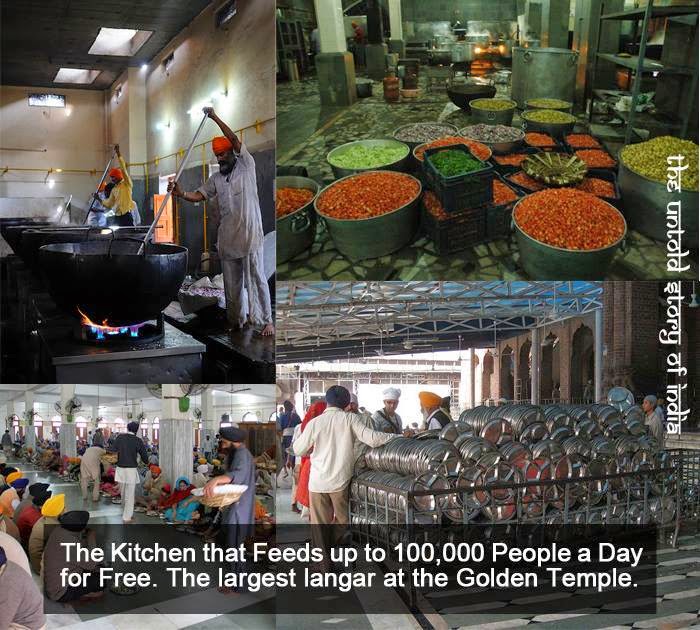
Located inside many gurdwaras are common kitchens/canteens known as a langar. At the langar, food is served to all visitors regardless of faith or background. Vegetarian food is often served to ensure that all people, even those with dietary restrictions, can eat together as equals.
The largest langar is found at the Golden Temple. It typically feeds roughly 40,000 people a day for free. On religious holidays and weekends, the langar can feed upwards of 100,000 people a day. This incredible feat is made possible through donations and volunteers.
The institution of the Sikh langar, or free kitchen, was started by the first Sikh Guru, Guru Nanak. It was designed to uphold the principle of equality between all people regardless of religion, caste, colour, creed, age, gender or social status, a revolutionary concept in the caste-ordered society of 16th-century India where Sikhism began.
– About 90% of the staff is made up of volunteers (known as sewadars) that can help out for as long as they like.
– Volunteers can assist with food prep such as peeling garlic or hand rolling rotis.
– Large flour grinders located under the kitchen process up to 12,000 kg of flour a day.
– Large vats of lentils require 1-2 people to stir.
– On busy holidays, the kitchen will use their automatic roti machine which can produce 25,000 rotis/hour.
– Once the food is prepared, it is placed into smaller containers so volunteers can carry around the dining hall and serve.
– Everyone must sit on the floor as equals, so all people are on the same level and nobody is ‘above’ anyone else.
– There are two halls that can serve about 5,000 diners at a time.
– After dining, plates and utensils are handed to another set of volunteers.
– Each dish is washed five separate times in large communal areas.
– Plates are then stacked for the next round of diners.
Source : The Untold Story of India


INCREDIBLE INDIA ! Proud to be an INDIAN….